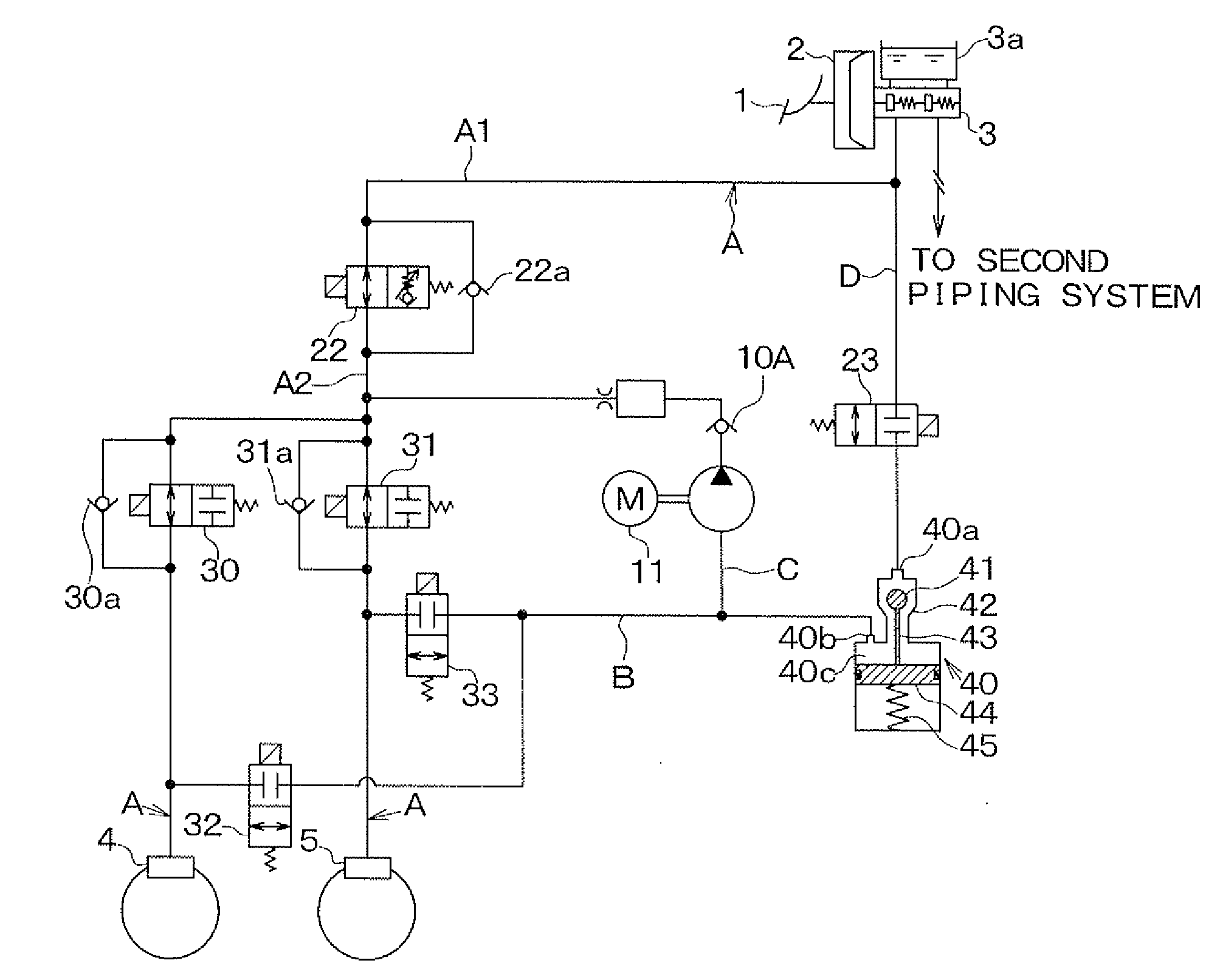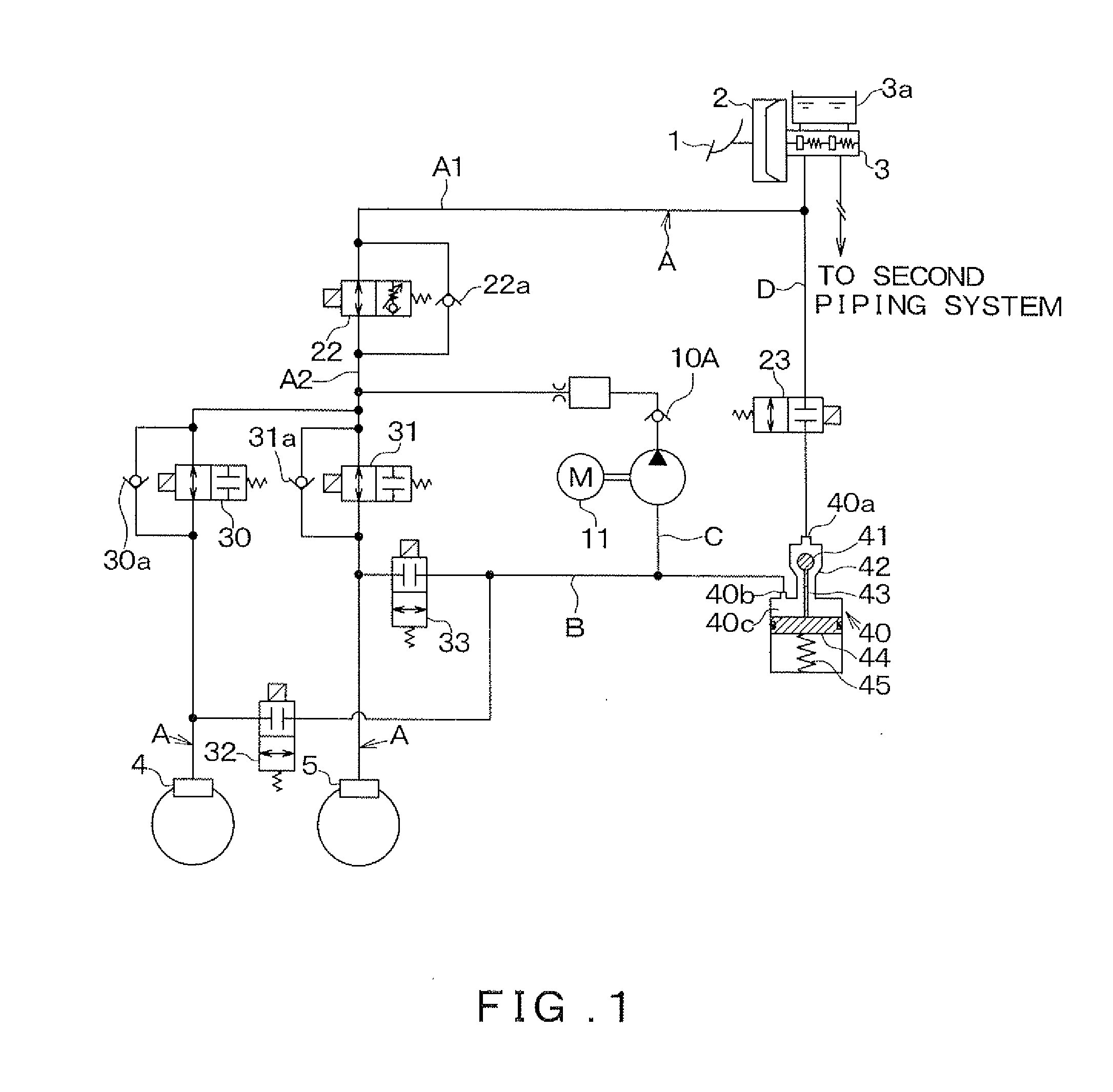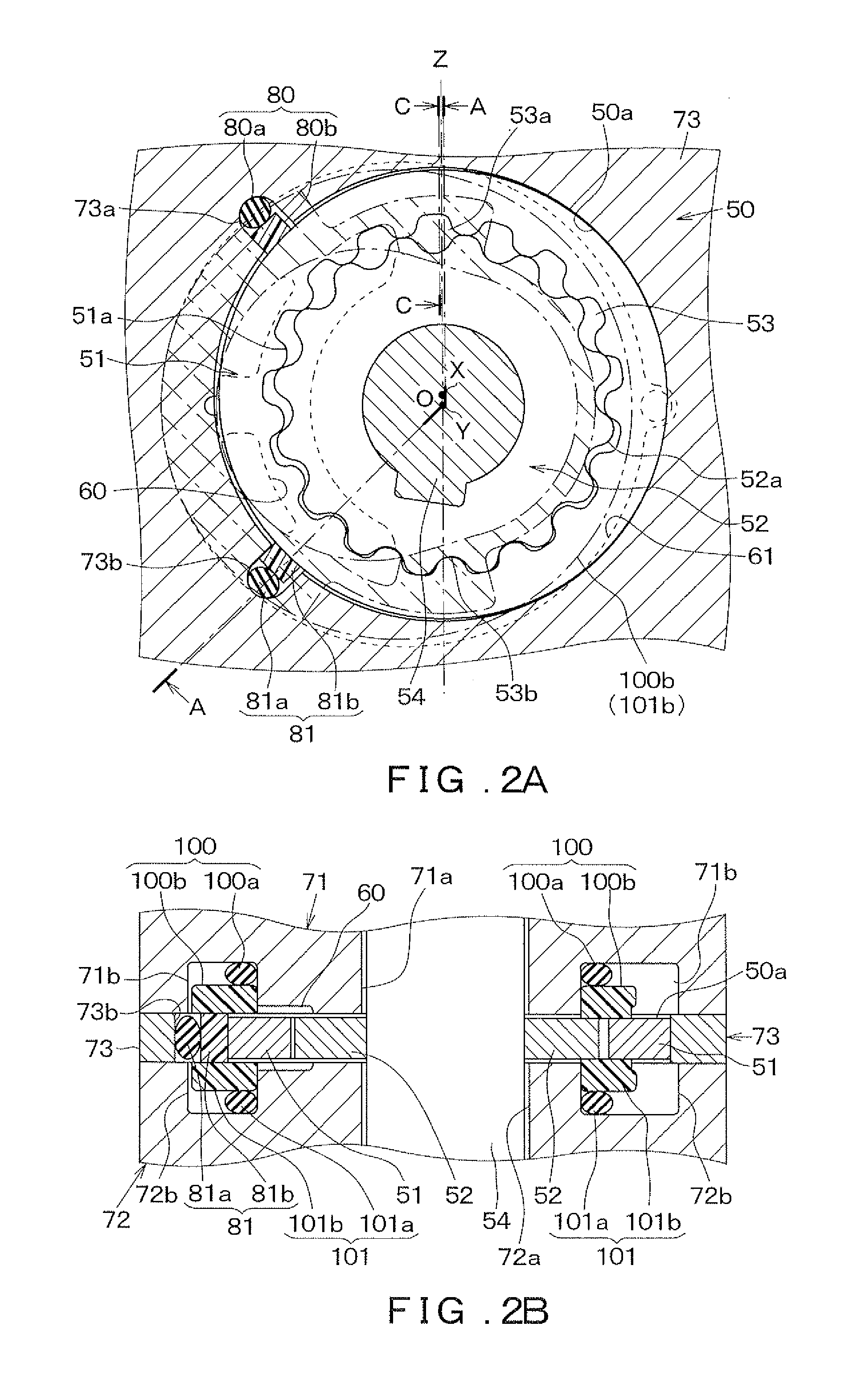Rotary pump and brake device in which rotary pump is provided
a technology of rotary pump and brake device, which is applied in the direction of brake system, machine/engine, liquid fuel engine, etc., can solve the problems of excessive pressure of brake fluid, increased discharge pulsation, and increased sealing surface pressure, so as to increase the braking force
- Summary
- Abstract
- Description
- Claims
- Application Information
AI Technical Summary
Benefits of technology
Problems solved by technology
Method used
Image
Examples
first embodiment
[0035]First, a basic configuration of a brake device will be explained based on FIG. 1. An example will be explained in which a brake device according to the present invention is used in a four-wheeled vehicle with front wheel drive, in which the hydraulic circuit is a diagonally-split brake system that is provided with separate piping systems for connecting the right front wheel and left rear wheel and connecting the left front wheel and right rear wheel, but the brake device can also be used with separate front and rear piping systems and the like.
[0036]As shown in FIG. 1, a brake pedal 1 is connected to a brake booster 2, and a brake pedal force or the like is multiplied by the brake booster 2.
[0037]The brake booster 2 includes a push rod or the like that transmits the multiplied pedal force to a master cylinder 3, and the push rod generates a master cylinder pressure by pressing on a master piston that is provided in the master cylinder 3. Note that the brake pedal 1, the brake ...
second embodiment
[0088]A second embodiment of the present invention will be explained. In the brake device in the present embodiment, the structure of the resin members 100b, 101b of the seal members 100, 101 in the rotary pump 10 is different from the structure in the first embodiment. In all other respects, the second embodiment is the same as the first embodiment, so only the portions that differ will be explained.
[0089]FIG. 5A is an enlarged front view of the resin member 100b in the seal member 100. FIG. 5B is an enlarged oblique view of the resin member 100b. FIG. 5C is an enlarged sectional view of the resin member 100b along a line D-D in FIG. 5A. Hereinafter, the structure of the resin members 100b, 101b according to the present embodiment will be explained in detail using FIGS. 5A to 5C. Note that in the present embodiment as well, the resin members 100b, 101b are mirror images of one another that symmetrically sandwich the outer rotor 51 and the inner rotor 52 between them.
[0090]As shown ...
third embodiment
[0092]A third embodiment of the present invention will be explained with reference to FIGS. 6A and 6B. In the brake device in the present embodiment, the structure of the resin members 100b, 101b of the seal members 100, 101 in the rotary pump 10 is different from the structure in the first embodiment. In all other respects, the second embodiment is the same as the first embodiment, so only the portions that differ will be explained.
[0093]FIGS. 6A and 6B are schematic sectional views that show relationships among forces that act on individual locations of the resin members 100b, 101b. The cross sections correspond to the cross section along the line C-C in FIG. 2A.
[0094]As shown in FIGS. 6A and 6B, in the rotary pump 10 according to the present embodiment, counterbore portions (groove portions) 100h, 101h that reduce the thicknesses of the sealing portions 100e, 101e are provided in the sealing portions 100e, 101e on the opposite sides (rear face sides) from the end faces that face ...
PUM
 Login to View More
Login to View More Abstract
Description
Claims
Application Information
 Login to View More
Login to View More - R&D
- Intellectual Property
- Life Sciences
- Materials
- Tech Scout
- Unparalleled Data Quality
- Higher Quality Content
- 60% Fewer Hallucinations
Browse by: Latest US Patents, China's latest patents, Technical Efficacy Thesaurus, Application Domain, Technology Topic, Popular Technical Reports.
© 2025 PatSnap. All rights reserved.Legal|Privacy policy|Modern Slavery Act Transparency Statement|Sitemap|About US| Contact US: help@patsnap.com



